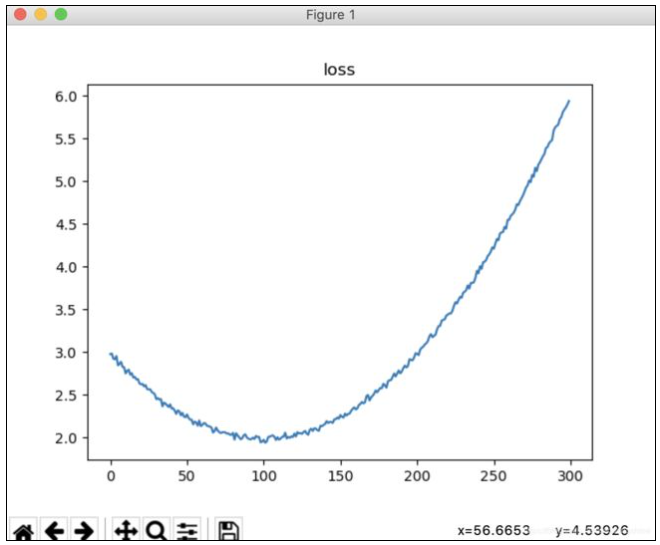这篇文章主要介绍Python中用numpy解决梯度下降最小值的方法,文中介绍的非常详细,具有一定的参考价值,感兴趣的小伙伴们一定要看完!
问题描述:求解y1 = xx -2 x +3 + 0.01*(-1到1的随机值) 与 y2 = 0 的最小距离点(x,y)
给定x范围(0,3)
不使用学习框架,手动编写梯度下降公式求解,提示:x = x - alp*(y1-y2)导数(alp为学习率)
函数图像为:

代码内容:
import numpy as np import matplotlib.pyplot as plt def get_loss(x): c,r = x.shape loss = (x**2 - 2*x + 3) + (0.01*(2*np.random.rand(c,r)-1)) return(loss) x = np.arange(0,3,0.01).reshape(-1,1) """plt.title("loss") plt.plot(get_loss(np.array(x))) plt.show()""" def get_grad(x): grad = 2 * x -2 return(grad) np.random.seed(31415) x_ = np.random.rand(1)*3 x_s = [] alp = 0.001 print("X0",x_) for e in range(2000): x_ = x_ - alp*(get_grad(x_)) x_s.append(x_) if(e%100 == 0): print(e,"steps,x_ = ",x_) plt.title("loss") plt.plot(get_loss(np.array(x_s))) plt.show()
运行结果:
X0 [1.93745582] 0 steps,x_ = [1.93558091] 100 steps,x_ = [1.76583547] 200 steps,x_ = [1.6268875] 300 steps,x_ = [1.51314929] 400 steps,x_ = [1.42004698] 500 steps,x_ = [1.34383651] 600 steps,x_ = [1.28145316] 700 steps,x_ = [1.23038821] 800 steps,x_ = [1.18858814] 900 steps,x_ = [1.15437199] 1000 steps,x_ = [1.12636379] 1100 steps,x_ = [1.1034372] 1200 steps,x_ = [1.08467026] 1300 steps,x_ = [1.06930826] 1400 steps,x_ = [1.05673344] 1500 steps,x_ = [1.04644011] 1600 steps,x_ = [1.03801434] 1700 steps,x_ = [1.03111727] 1800 steps,x_ = [1.02547157] 1900 steps,x_ = [1.02085018]
图片

以上是Python中用numpy解决梯度下降最小值的方法的所有内容,感谢各位的阅读!希望分享的内容对大家有帮助,更多相关知识,欢迎关注亿速云行业资讯频道!
免责声明:本站发布的内容(图片、视频和文字)以原创、转载和分享为主,文章观点不代表本网站立场,如果涉及侵权请联系站长邮箱:is@yisu.com进行举报,并提供相关证据,一经查实,将立刻删除涉嫌侵权内容。